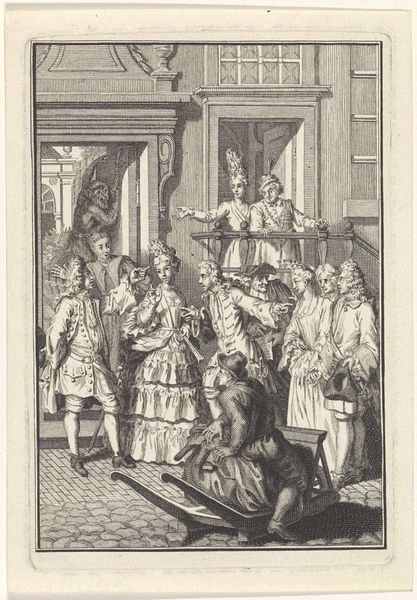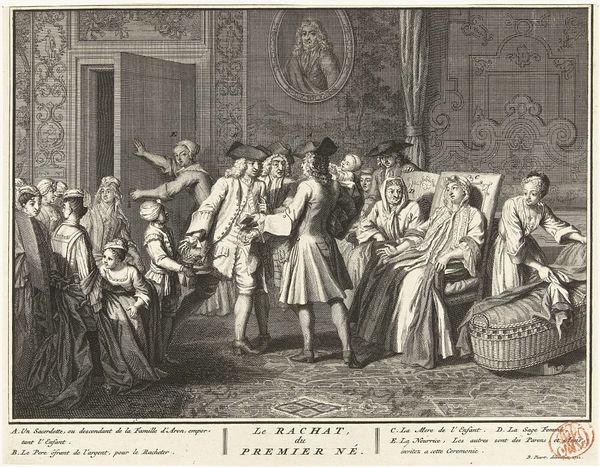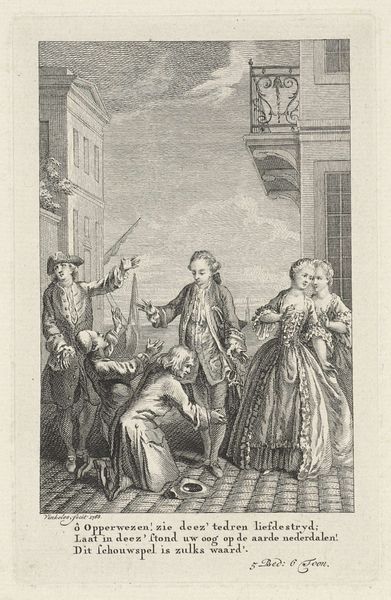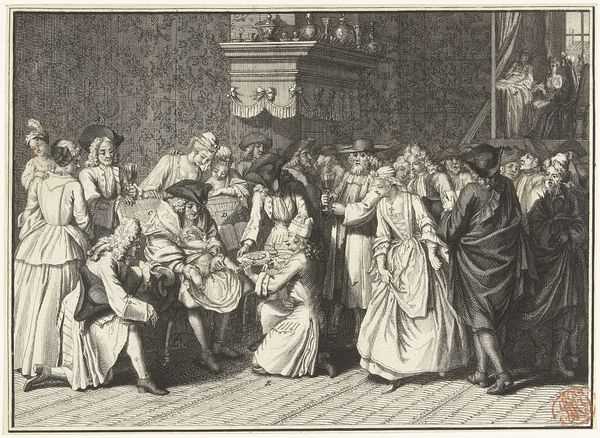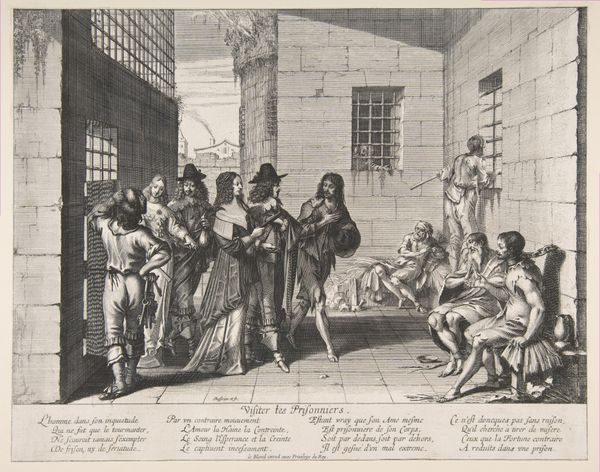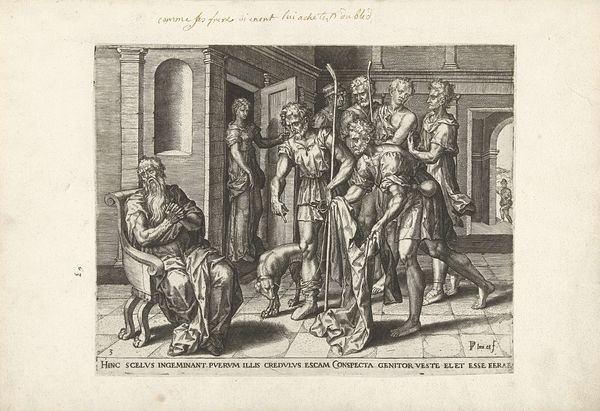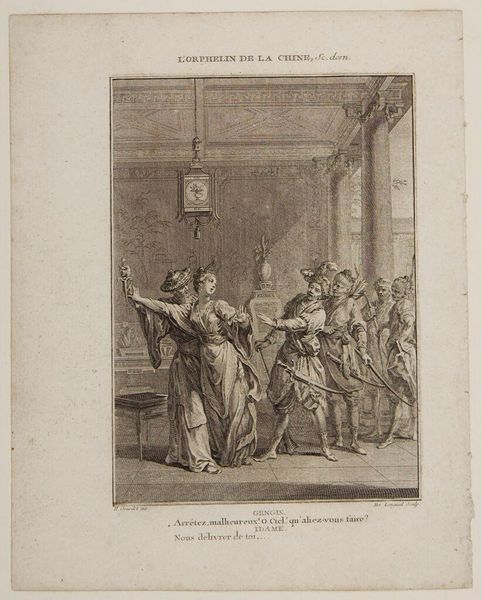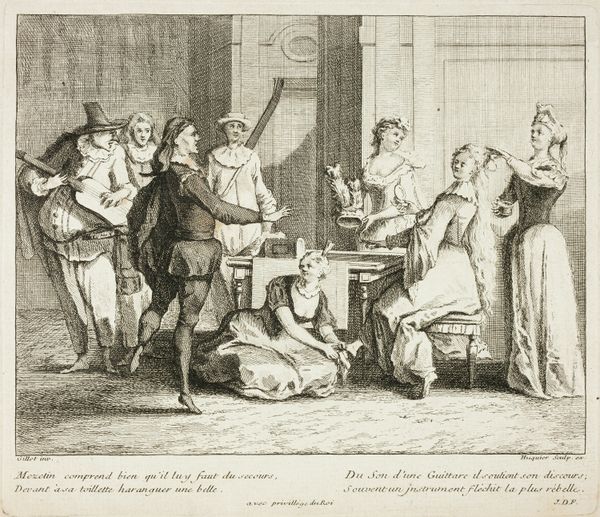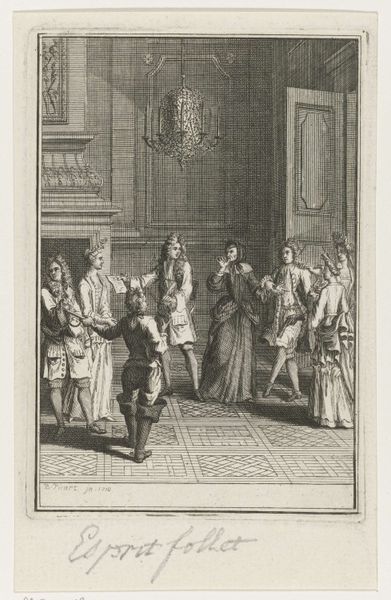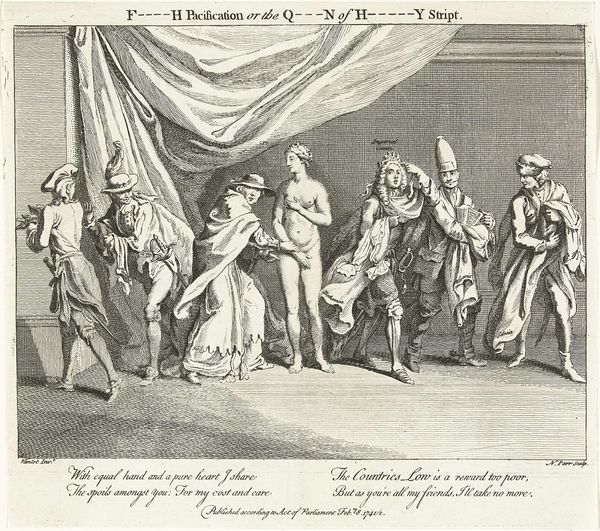
engraving
#
baroque
#
old engraving style
#
genre-painting
#
history-painting
#
engraving
Dimensions: height 228 mm, width 304 mm
Copyright: Rijks Museum: Open Domain
This etching from 1742, made by an anonymous artist, presents Robert Walpole in a rather unpleasant state. Here, we see the very act of expulsion – Walpole, the ‘Engelsman,’ is graphically depicted in the throes of vomiting and defecating. Such imagery carries potent symbolic weight. Vomiting and excrement, historically, signify not only physical illness but also moral corruption. Think of the medieval concept of the ‘vice’ figure, whose excesses ultimately lead to a revolting downfall. This motif is not confined to the visual arts. Consider how, in literature, characters who embody greed or moral decay often meet similarly degrading ends, purged of their ill-gotten gains, their sins laid bare for all to see. The image is a forceful expression of public sentiment. It leverages the psychological impact of disgust to convey a deeper message about the perceived corruption and failings of Walpole’s leadership, engaging viewers viscerally, burrowing into the subconscious with its stark portrayal of expulsion. The non-linear, cyclical progression of this symbol, has resurfaced, evolved, and taken on new meanings in different historical contexts.
Comments
No comments
Be the first to comment and join the conversation on the ultimate creative platform.
